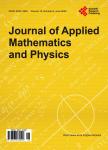Special Relativity’s “Newtonization” in Complex “Para-Space”: The Two Theories Equivalence Question
Special Relativity’s “Newtonization” in Complex “Para-Space”: The Two Theories Equivalence Question作者机构:Department of Mathematics and Computer Science Oakton College Des Plaines IL USA
出 版 物:《Journal of Applied Mathematics and Physics》 (应用数学与应用物理(英文))
年 卷 期:2024年第12卷第7期
页 面:2421-2451页
学科分类:07[理学] 0701[理学-数学] 070101[理学-基础数学]
主 题:Special Relativity’s Hyperbolic Versus Circular Versions Galilean Kinematics Partial Equivalence of SR and Newton’s Theories Algebra of Relativistic and the Corresponding Galilean Velocities
摘 要:Complex model, say C3, of “para-space as alternative to the real M4 Minkowski space-time for both relativistic and classical mechanics was shortly introduced as reference to our previous works on that subject. The actual aim, however, is an additional analysis of the physical and para-physical phenomena’ behavior as we formally transport observable mechanical phenomena [motion] to non-real interior of the complex domain. As it turns out, such procedure, when properly set, corresponds to transition from relativistic to more classic (or, possibly, just classic) kind of the motion. This procedure, we call the “Newtonization of relativistic physical quantities and phenomena, first of all, includes the mechanical motion’s characteristics in the C3. The algebraic structure of vector spaces was imposed and analyzed on both: the set of all relativistic velocities and on the set of the corresponding to them “Galilean velocities. The key point of the analysis is realization that, as a matter of fact, the relativistic theory and the classical are equivalent at least as for the kinematics. This conclusion follows the fact that the two defined structures of topological vector spaces i.e., the structure imposed on sets of all relativistic velocities and the structure on set of all “Galilean velocities, are both diffeomorphic in their topological parts and are isomorphic as the vector spaces. As for the relativistic theory, the two approaches: the hyperbolic (“classical SR) with its four-vector formalism and Euclidean, where SR is modeled by the complex para-space C3, were analyzed and compared.



